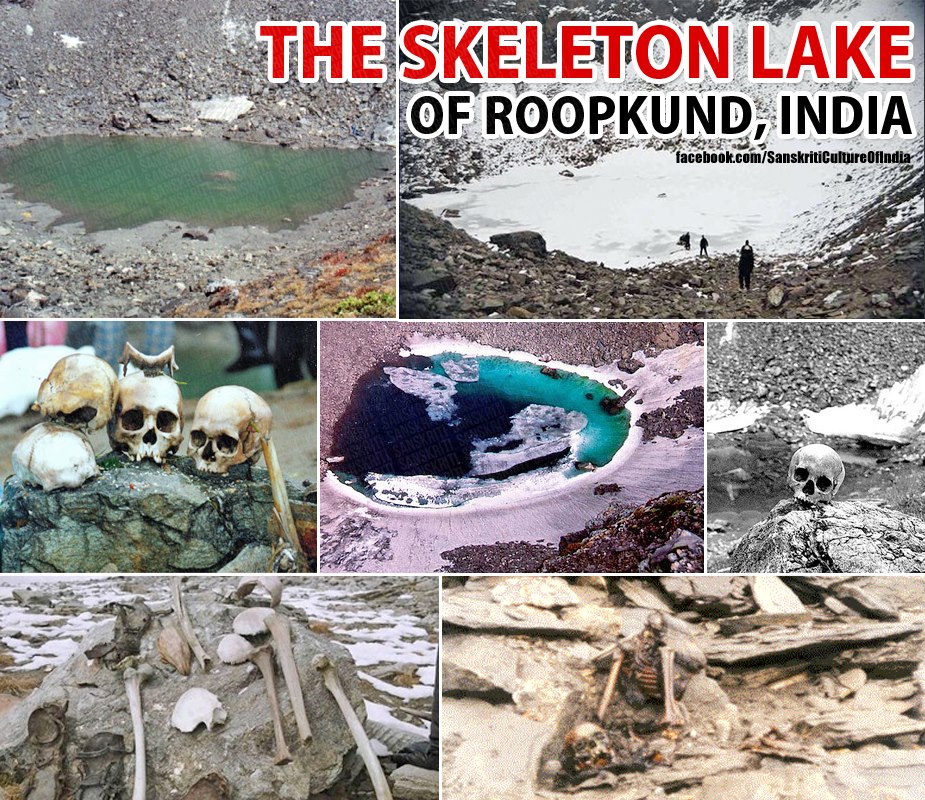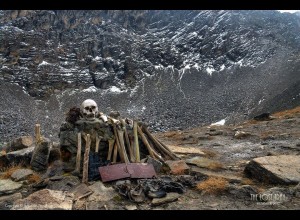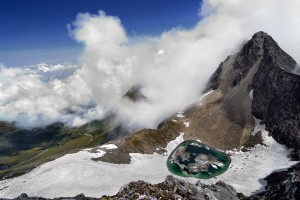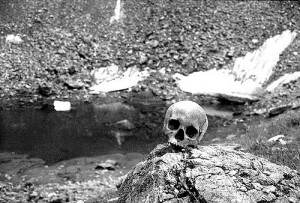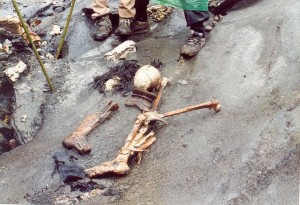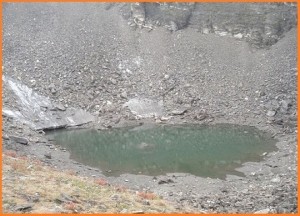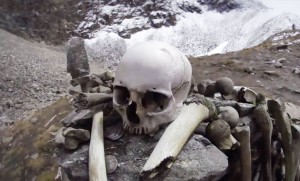In 1942, a British forest guard made an alarming discovery in Roopkund, India. That summer, the melting ice revealed a terrible tragedy that had occurred. At the bottom of a small valley, some 16,000 feet above sea level, he found skeletal remains that either lay strewn around the lake or floating in the water.Fearing a Japanese invasion, the British government sent a team of investigators to determine if this was true. Upon close inspection, however, the team realized that the remains were not fresh. Over 500 remains were found with flesh, hair and bones preserved by the dry, cold air but no one could determine how long they had been lying in the valley. Many theories were put forward, from ritual suicide to epidemic to a flash freeze.
The skeletons remained a mystery for decades until an expedition in 2004 revealed some really strange answers. The remains were of several groups of people and they all died from skull fractures from round objects. Local folk songs speak of a goddess who was so angry with the outsiders who defiled her sanctuary that she rained death upon them by flinging hailstones as hard as iron. It seems the hailstones were as big as cricket balls and these people died suddenly with nowhere to hide or seek shelter. Radio carbon-dating determined the time period to be around 850AD.
It has been hard to speculate where these people were headed as there is no historical indication of any trade route around that area. Trapped in the valley, the bodies remained obscure from the world until their gruesome discovery centuries later by Ranger H.K. Madhwal on that fateful day!

